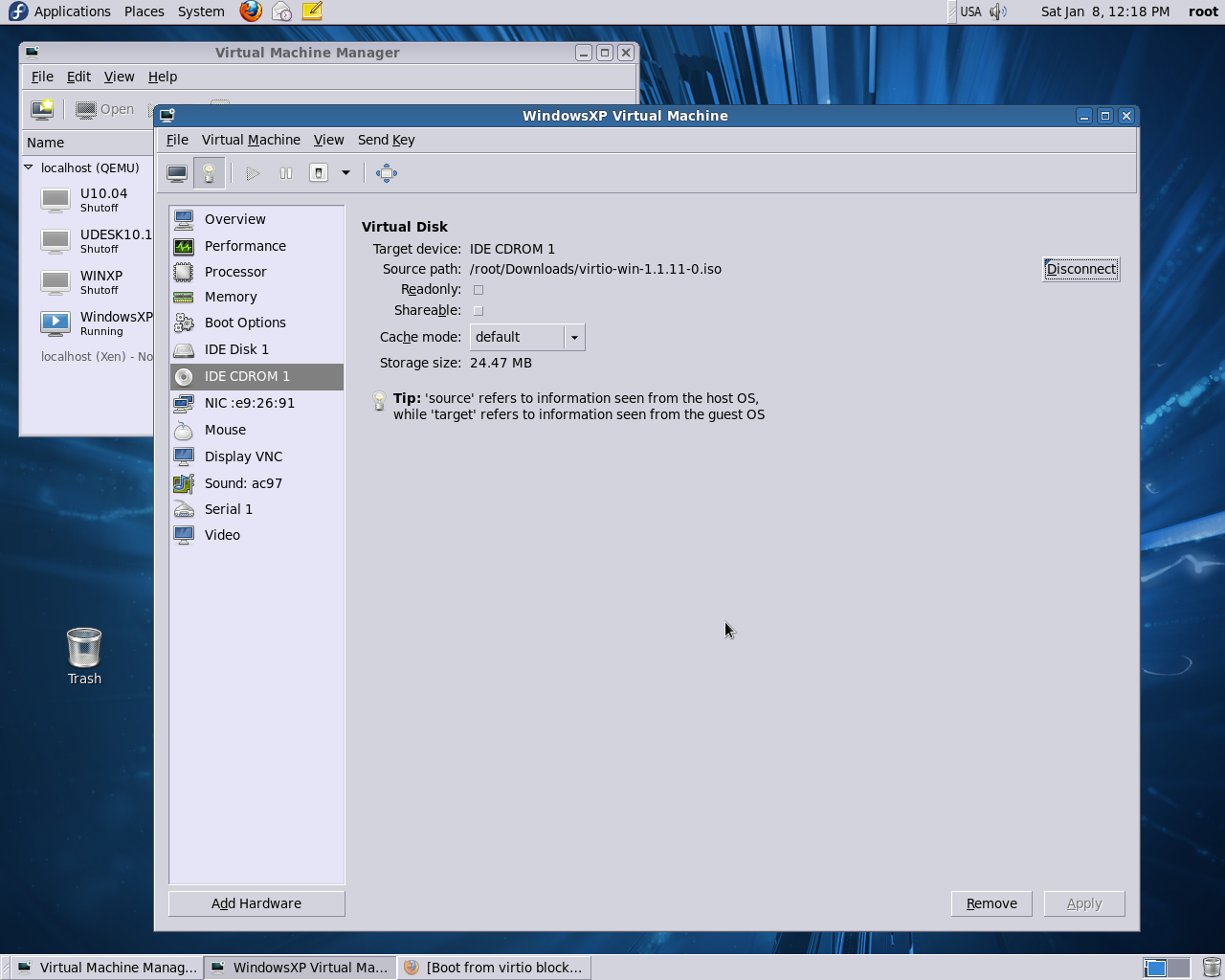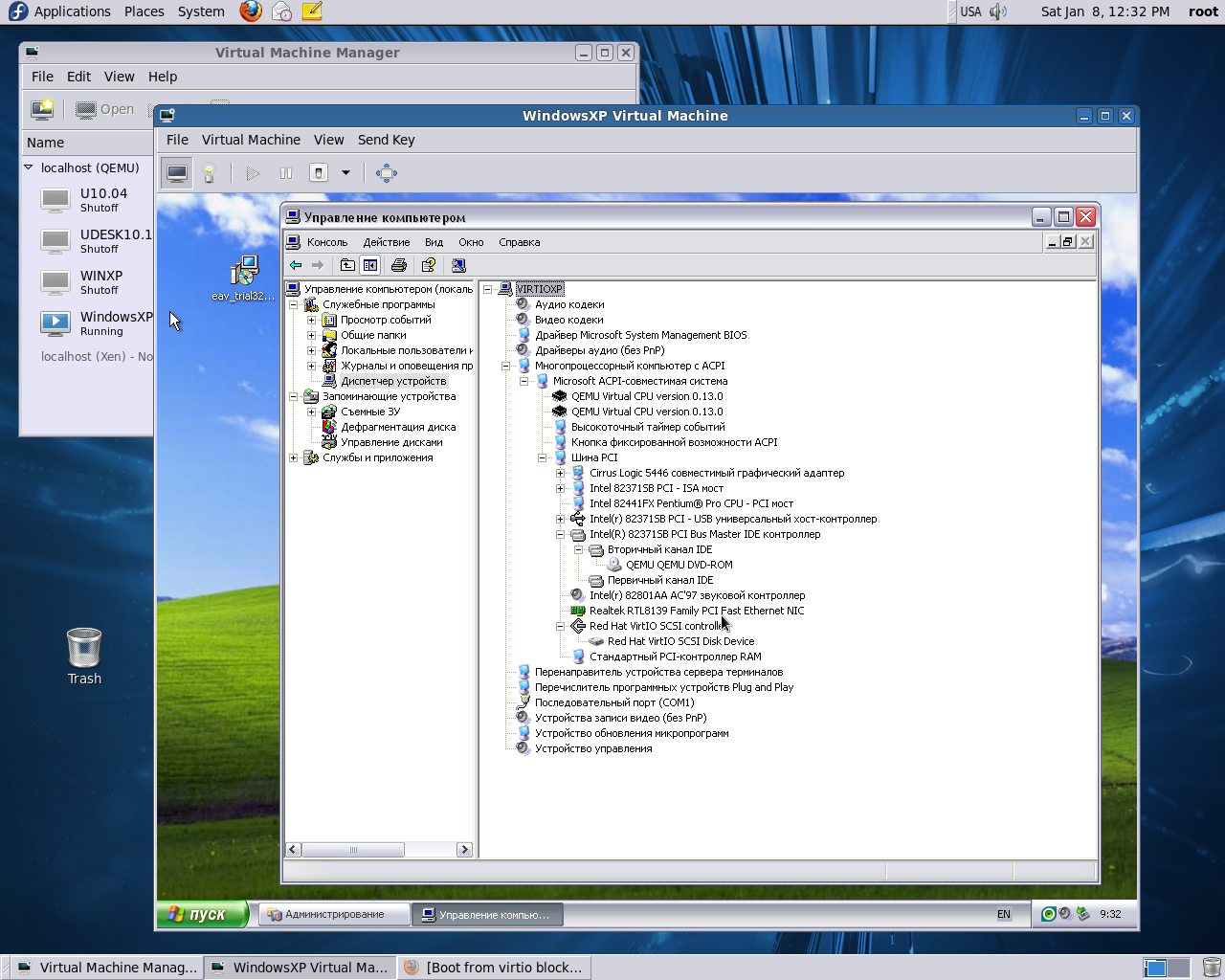Qemu Vga Drivers For Mac
Mac OS QEMU with VGA passthrough, Clover EFI boot. GitHub Gist: instantly share code, notes, and snippets. Sudo apt install qemu-system-x86 libvirt-clients libvirt-daemon-system ovmf virt-manager. This installs: 64 bit x86 emulation and the libvirt abstraction layer, the open virtual machine firmware (ovmf) - First level of EFI support (you need Clover as well) virt-manager - virtual machine configuration and management UI.
There is no 2000/XP version of CL-54XX driver (needed for QEMU), only 9x/NT4.
Cirrus Logic 54xx Driver in current trunk
Dell Vga Drivers
Automated installation doesnt work.
Manual installation is required. Copy the registry keys from section below and put them into bootbootdatahivesys_i386.infThen edit txtsetup.sif, adding the following, into [Map.Display] section:cl = 'CL54xx'into [Display] section:cl = 'Cirrus Logic 54xx (800x600x16)',CL54xx,800,600,16
Finally, you need to edit bootbootdatapackagesreactos.dff and add lines:moduleswindowscl54xx.sys 2 optionalmoduleswindowscl54xx.dll 1 optional
Then you have to create windows directory in modules and place cl-54xx driver files inside. Rebuild and select Cirrus as graphics setting in 1st stage.
Vga Drivers Download
(see Bug 2286) <by Caemyr>
Cirrus Logic 54xx Driver installation for ReactOS 0.3.4+

Add following lines in hivesys_i386.inf file

Cirrus Logic 54xx Driver installation for ReactOS 0.2.9+
The Cirrus Logic 54xx driver is available from multiple web sites. Download the version for Windows NT4/2000/XP
Copy cirrus.inf and cl54xx.sys files to Reactosinf directory.
The driver will be automatically installed at Reactos boot.
Cirrus Logic 54xx Driver installation for Reactos 0.2.8 and previous releases
Add following lines in hivesys.inf file
Import the following registry file
- 1QEMU on OS X (macOS) hosts
While QEMU's main host platform is Linux, it is also supported on operating systems for Apple's Mac computers (known as OS X or macOS). The official support policy covers the last two released versions of OSX; QEMU might work on older versions, but it is not guaranteed and it might not even compile on older versions.
Please note that fewer developers work on QEMU for Mac hosts, so it might be less stable (but I don't think it is). If you can replicate a bug on a Linux hosted QEMU before reporting it, this is helpful as it means a wider set of people might look into it.
Some system emulations on Linux use KVM, a special emulation mode which claims to reach nearly native speed.KVM is mainly used for x86 (32 and 64 bit) emulation on x86 hosts running Linux. Should you want to run Qemu with KVM support on a G5, depending on your distribution, you might have to compile your own kernel with KVM support.There exists a port of QEMU to Hypervisor.framework (a kernel module from Apple which is similar in spirit to KVM), but unfortunately it is not included in upstream QEMU.

Building QEMU for OS X
The system requirements are:
- One of the last two most recent versions of OS X (currently that's 10.13 or 10.14)
- The clang compiler shipped with the version of Xcode for that OS X. GCC might also work, but we recommend clang
Additional build requirements are:
You may find it easiest to get these from a third-party packagersuch as Homebrew, Macports, or Fink.
After downloading the QEMU source code, double-click it to expand it.
Then configure and make QEMU. The target-list option is used to build only the machine or machines you want. If you don't specify it, all machines would be built. Probably not what you want.
This way doesn't require you to wait for the configure command to complete:
If your system has the 'say' command, you can use it to tell you when QEMU is done
You can use './configure --help' to see a full list of options.
Here are all the currently available machines:
- aarch64-softmmu
- alpha-softmmu
- arm-softmmu
- cris-softmmu
- i386-softmmu
- lm32-softmmu
- m68k-softmmu
- microblaze-softmmu
- microblazeel-softmmu
- mips-softmmu
- mips64-softmmu
- mips64el-softmmu
- mipsel-softmmu
- moxie-softmmu
- or32-softmmu
- ppc-softmmu
- ppc64-softmmu
- ppcemb-softmmu
- s390x-softmmu
- sh4-softmmu
- sh4eb-softmmu
- sparc-softmmu
- sparc64-softmmu
- tricore-softmmu
- unicore32-softmmu
- x86_64-softmmu
- xtensa-softmmu
- xtensaeb-softmmu

We recommend building QEMU with the -default compiler provided by Apple, for your version of Mac OS X (which will be 'clang'). The configure script will automatically pick this.
Errors on old compilers
Note: If after the configure step you see a message like this:
you may have to install your own version of gcc. You can build it from source (expect that to take several hours) or obtain third party binaries of gcc available from Homebrew or MacPorts.
You can have several versions of GCC on your system. To specify a certain version, use the --cc and --cxx options.
Build with LLVM/Clang 7
If you need to compile with newer versions of clang (to get f.i. AVX/AVX2 support), you can install llvm through e.g., brew.
Note that building for machines with CPUs supporting such extensions will exclude running your binary on earlier machines.
Compile with:
Contacts
If there are any issues with this web page, please let me know.